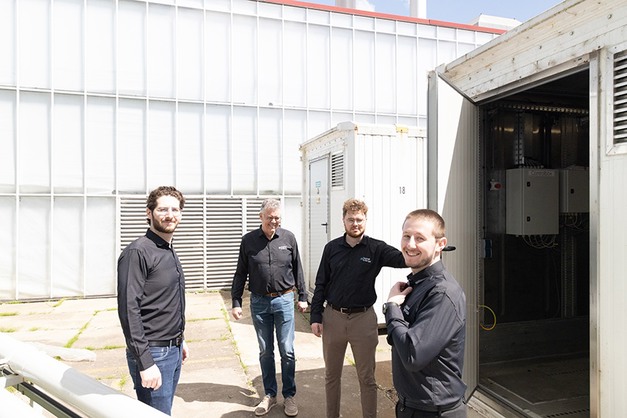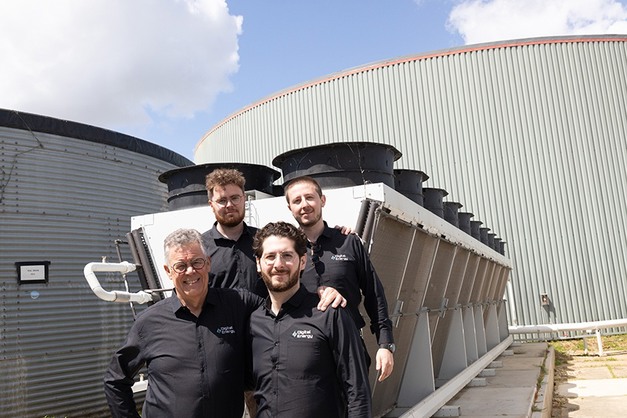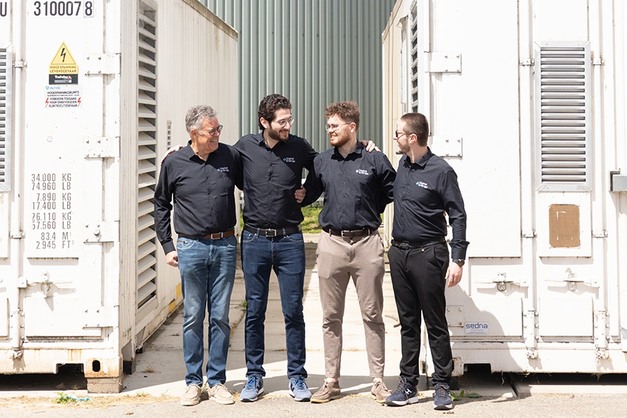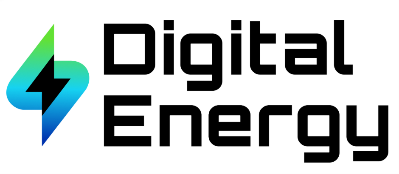"As demand for artificial intelligence explodes, data centers are struggling with grid capacity, congestion, and community acceptance. On the other side, as decarbonization efforts intensify, greenhouse growers are under pressure to move away from fossil-based heating," says Carlos Reuven, co-founder & CEO of Digital Energy Group, which operates from De Kwakel, the Netherlands. "By repurposing the electricity used by AI data centers in the form of heat, we're able to power the AI revolution while warming greenhouses. We align the challenges of these industries to create a win-win situation." © Digital Energy
© Digital Energy
Heat from AI
Digital Energy's model flips the traditional logic of data center development. Rather than building in rural areas where land and electricity are cheapest, Digital Energy looks for locations where grid capacity is available, connectivity is abundant, and where heat has the highest value—often near greenhouses. Instead of only being energy consumers, the data center becomes an energy producer, a solution named Digital Energy Centers.
"We start from the heat user. Once we identify grid capacity and a grower partner, we custom-fit a data center that provides heat supply," says Co ten Wolde, co-founder and VP Sales. "This way, the grower gets sustainable, CO₂-free heating, and the data center makes productive use of energy that would otherwise be wasted."
The setup is based on plug-and-play data centers, containerized modules, filled with servers cooled using liquid technology rather than noisy fans. "This not only improves efficiency but also makes it virtually silent and invisible to the outside world. It could be anything sitting next to the greenhouse," he adds.
Dual-use energy
At the heart of the concept is the principle of efficiency by using energy twice—first to power the data center, then to heat greenhouses. "Normally, electricity powers a data center and the heat is wasted. In our case, we capture 97% of that energy and turn it into usable heat," Co says. "If you think about it, 50% of global energy end use goes to heating, while 3% is used for data centers. If we can combine these two worlds, we not only lower costs but help each other decarbonize." © Digital Energy
© Digital Energy
Always-on heating, always-on AI
Unlike traditional heat sources, which require careful planning and are impacted by market volatility, the data centers run year-round, offering growers a reliable and consistent source of heat. "AI is always working—on your phone, on your computer, everywhere—so the servers are always running. That makes the heat supply constant," Co explains.
Thanks to built-in UPS battery systems and redundancy equipment, uptime is aimed to be maintained at 99.9%, which translates to a steady energy flow. "It's just like turning on the water tap in your kitchen. Heat is available on demand for the greenhouse," he says.
Partnering with growers
The collaboration model between Digital Energy Group and growers is deliberately low-barrier. "We look at this as a partnership," says Co. "If a grower has a connection or can build one, and has space for the data center, we take care of the rest—engineering, financing, building, and managing. The grower receives the heat for free and we share the revenue up to 50/50 on sales to the neighbors."
Ideal locations are above 5 MW in capacity, often linked to greenhouses of 10 hectares or more, although high-intensity smaller growers, cooperatives, and areas with opportunities to distribute heat to neighbors are also viable. "Growers can create an additional revenue stream by supporting us in the distribution of sustainable heat," Co adds.
The numbers
The numbers speak for themselves. Co explains that a 10-hectare bell pepper grower currently pays around €90,000 annually in CO₂ emission costs, with projections showing up to €400,000 by 2030. By switching to electric heating via the Digital Energy Center, those costs vanish.
"On top of that, if they reallocate their CHP for the mFRR (emergency grid capacity) market, they can earn up to €550,000 per year. Add the heating gas savings—up to €860,000 annually—and we're talking about €1.5 million in savings per year without any investment from the grower," Co emphasizes. © Digital Energy
© Digital Energy
A future-proof solution
The model is already gaining traction, with seven growers signed up across the Netherlands. The shift from a sales-based to a full-service investment model has been key. "Growers are busy—they want to focus on their cultivation. So we take on the full A-to-Z process," Co explains.
Still, challenges remain. "Growers want control, and these projects require collaboration for the long term, longer than what they are used to. We're working with 15 to 30-year commitments, which is something growers will start to appreciate more as time passes, as this ultimately means both parties commit mutually for the future. We believe that growers will become more and more interested once they see this is the best alternative by far to gas-based heating," he says.
More demand than prepared for
Digital Energy has no shortage of interest, as they have a lot more demand than prepared for. "Therefore, we have a limited number of projects we can do in the upcoming years, and the terms are currently extremely beneficial. If growers want to sign up, now is the time," Carlos cautions.
Looking ahead, the company aims to develop one gigawatt of data center capacity, enough to majorly decarbonize the Dutch horticultural heating. "This is how we move from fossil fuels to renewable sources. By working together, two industries can solve each other's problems and compete globally using our resourcefulness," he concludes.
For more information:
Digital Energy Group
[email protected]
https://www.digital-energy.group/nl










